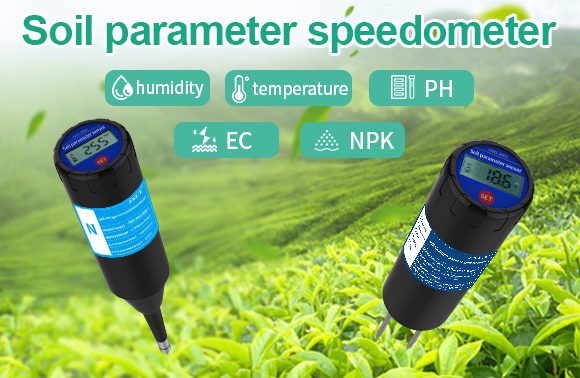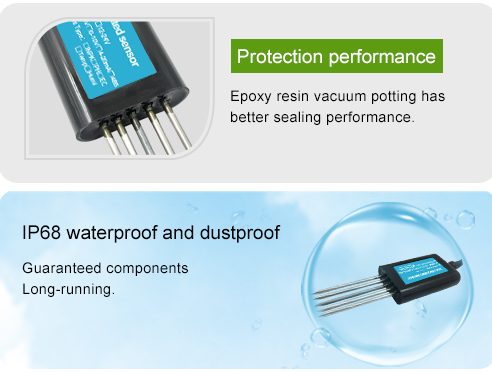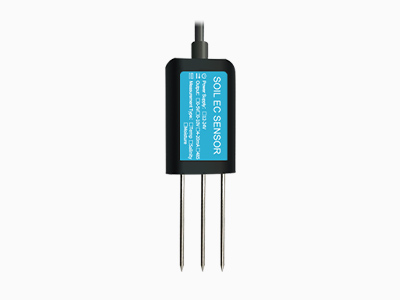Soil NPK sensors are essential tools in agriculture for measuring the levels of nitrogen (N), phosphorus (P), and potassium (K) in the soil. This article will explain the working principle of NPK sensors, whether they use reagents, and provide information on the ranges and individual measurement methods for each parameter.

Part 1: Working principle of soil npk sensor
Principle 1.Soil npk sensor work based on various technologies, but one common approach is using ion-selective electrodes. These electrodes are selectively detect the ions of interest (N, P, and K). When these electrodes come into contact with the soil, they generate electrical signals proportional to the concentration of the specific ion present.
Part 2: Reagent Usage in NPK Sensors

In some cases, NPK sensors may require the use of reagents to facilitate the measurement process. Reagents are chemical substances that react with specific ions in the soil to produce a measurable signal. However, not all soil npk sensors utilize reagents, as some sensors are operate without the need for additional chemicals.
Reagent-based soil npk sensor typically involve the following steps:
- Sample Preparation: A soil sample is collected and prepared for analysis, which may involve extracting the target ions using a specific solution.
- Reagent Addition: The sensor is equipped with reagents that react with the extracted ions to produce a color change, electrical signal.
- Signal Detection: The sensor detects the signal generated by the reaction between the reagents and the target ions, providing a quantitative measurement of the N, P, and K levels in the soil.
While reagent-based Soil NPK sensors can provide accurate and precise measurements, they may require additional time, resources. Reagent-free sensors, on the other hand, offer the advantage of simplicity and ease of use, making them suitable for rapid on-site testing.
Part 3: Measurement Ranges and Methods for NPK Parameters
- Nitrogen (N):
- Measurement Range: The typical measurement range for nitrogen in soil is between 0 and 200 parts per million (ppm) or higher, depending on the sensor’s sensitivity .
- Measurement Methods: NPK sensors measure nitrogen levels in the soil by detecting nitrate (NO3-) or ammonium (NH4+) ions. This can be achieved through ion-selective electrodes, optical sensors, or other detection technologies.
Phosphorus (P):
- Measurement Range: The measurement range for phosphorus in soil can vary widely, with typical values ranging from 1 to 100 ppm.
- Measurement Methods: NPK sensors measure phosphorus levels by detecting phosphate (PO4-) ions in the soil. Similar to nitrogen measurement, this can be done using ion-selective electrodes, colorimetric methods, or other analytical techniques.
Potassium (K):
- Measurement Range: The measurement range for potassium in soil is usually between 0 and 400 ppm, depending on the sensor’s specifications.
- Measurement Methods: NPK sensors measure potassium levels by detecting potassium ions (K+) in the soil. Ion-selective electrodes, flame photometry, or atomic absorption spectroscopy are commonly methods for potassium measurement.
Summary
Overall, NPK sensors play a crucial role in modern agriculture by providing accurate and timely information on soil nutrient levels. By utilizing advanced sensor technologies and measurement methods, farmers can optimize fertilization practices, enhance crop productivity. The integration of NPK sensors into precision agriculture systems enables farmers to make data-driven decisions.
